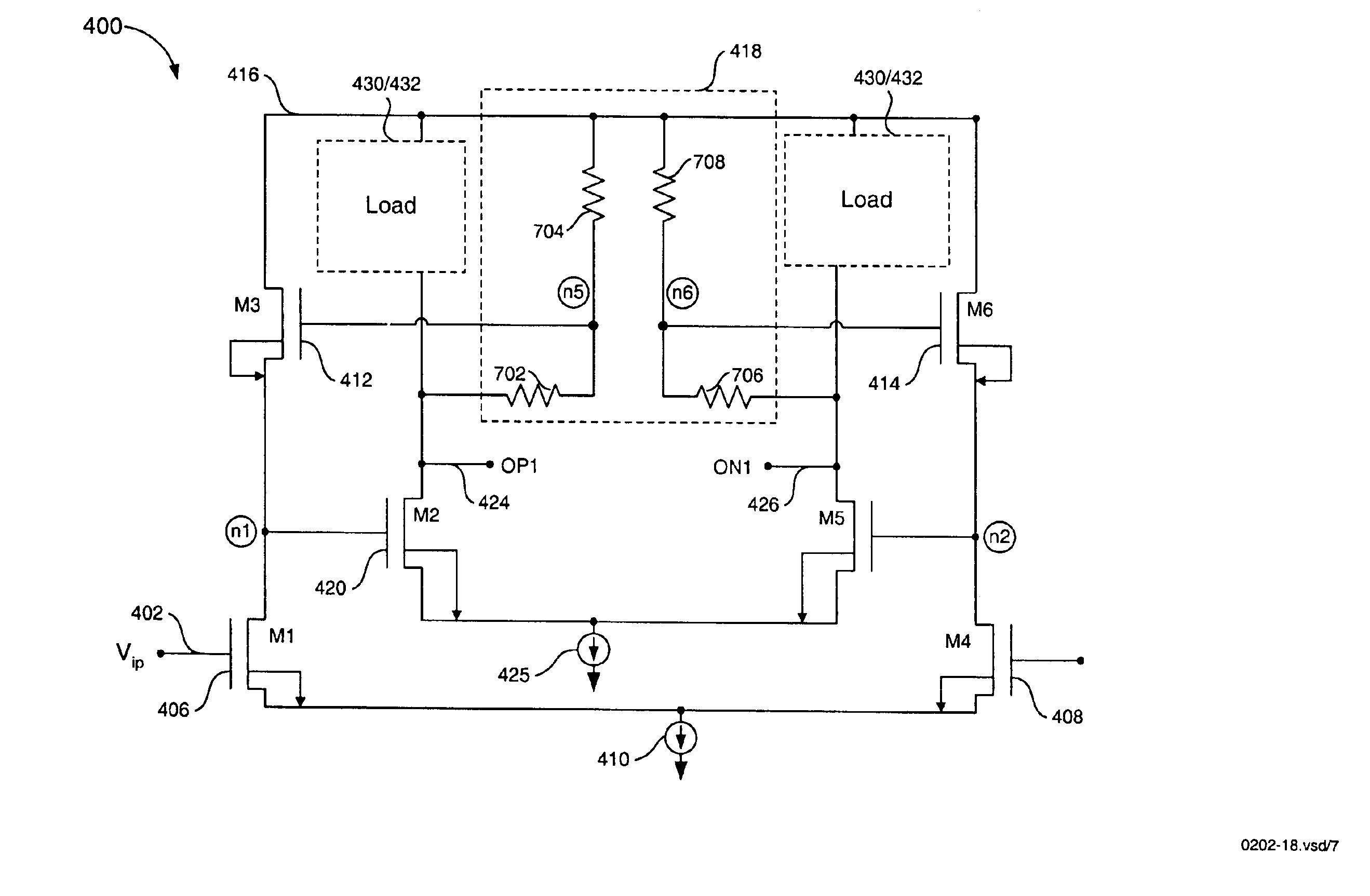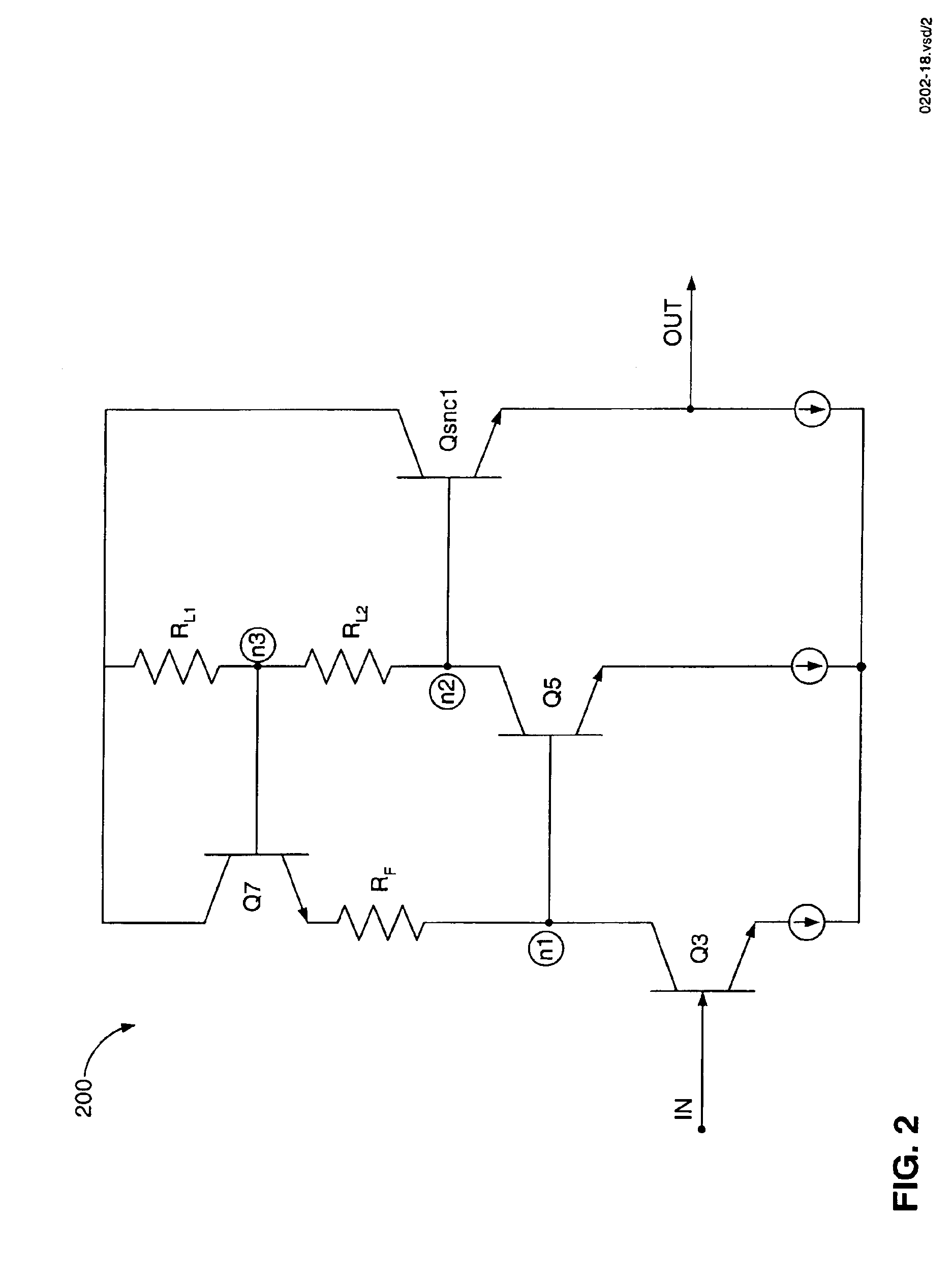Wideband CMOS gain stage
a gain stage and wideband technology, applied in the field of amplifiers, can solve problems such as gate oxide breakdown and/or draining to bulk junction punching through
- Summary
- Abstract
- Description
- Claims
- Application Information
AI Technical Summary
Benefits of technology
Problems solved by technology
Method used
Image
Examples
Embodiment Construction
Table of Contents
I. Bipolar Gain Stage
II. CMOS Gain Stage
[0022]A. Introduction[0023]B. Bias Network Configured for an Output Source Follower[0024]C. Bias Network Configured for Omission of an Output Source Follower[0025]D. Supply Voltage and Drain-to-Bulk Junction Punch-Through[0026]E. PVT Independent Gain[0027]F. Bandwidth Enhancement
III. Conclusions
I. Bipolar Gain Stage
[0028]FIG. 1 is a schematic diagram of a bipolar amplifier 100. FIG. 2 is a schematic diagram of a bipolar “hay circuit”200, which is taken from the bipolar amplifier 100 in FIG. 1. A gain of the bipolar amplifier 100 can be determined by analyzing the hay circuit 200.
[0029]The hay circuit 200 includes bipolar transistors Q3, Q5, and Q7, and resistors RL1 and RL2. The gain of the hay circuit 200 and of the bipolar-implemented amplifier 100 can be determined by denoting a resistive divider ratio “x,” as shown in equation 1: x=RL 1(RL 1+RL 2)EQ. (1)
[0030]Transconductances of the transistors Q3, Q5, Q7 are denot...
PUM
 Login to View More
Login to View More Abstract
Description
Claims
Application Information
 Login to View More
Login to View More - R&D
- Intellectual Property
- Life Sciences
- Materials
- Tech Scout
- Unparalleled Data Quality
- Higher Quality Content
- 60% Fewer Hallucinations
Browse by: Latest US Patents, China's latest patents, Technical Efficacy Thesaurus, Application Domain, Technology Topic, Popular Technical Reports.
© 2025 PatSnap. All rights reserved.Legal|Privacy policy|Modern Slavery Act Transparency Statement|Sitemap|About US| Contact US: help@patsnap.com



